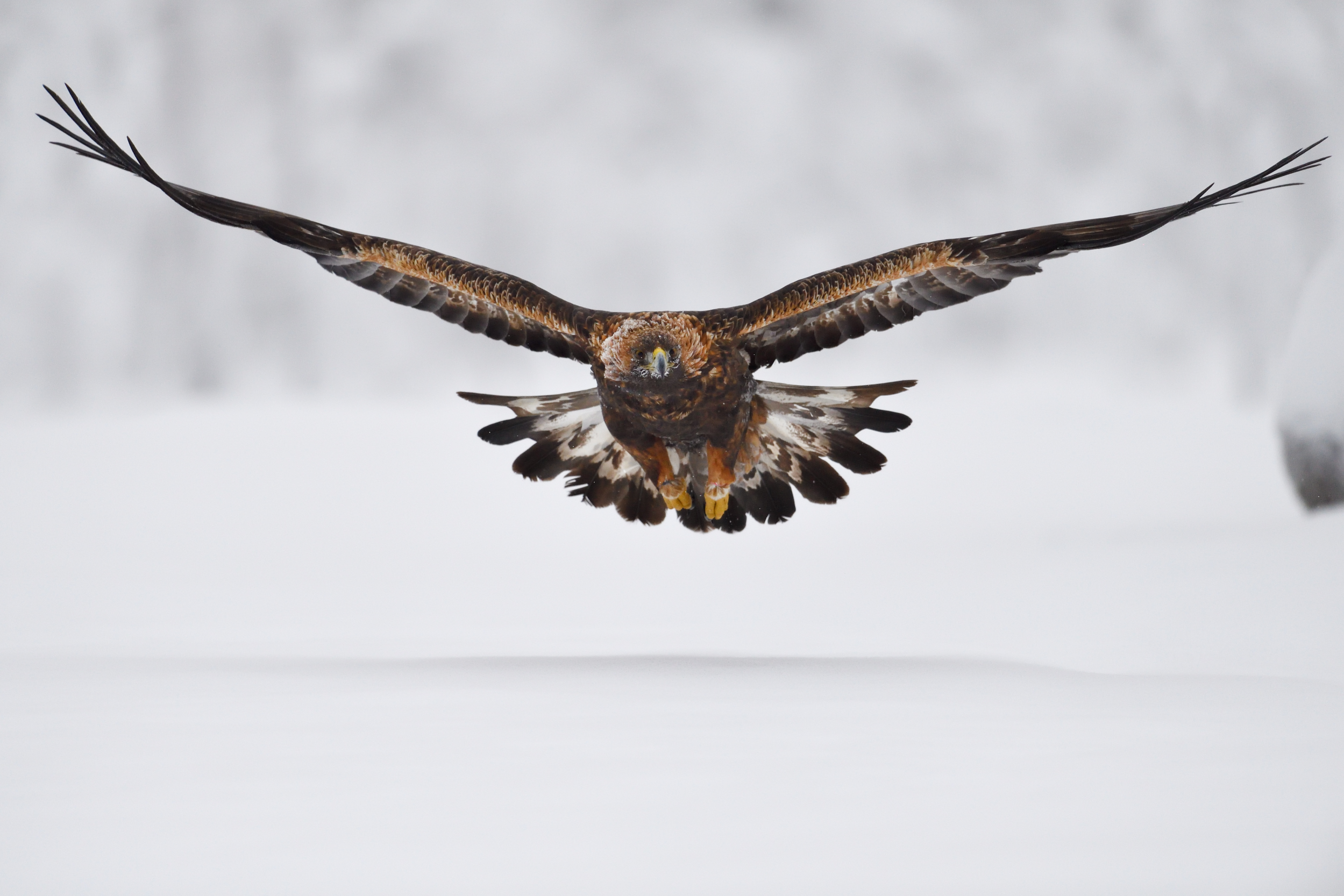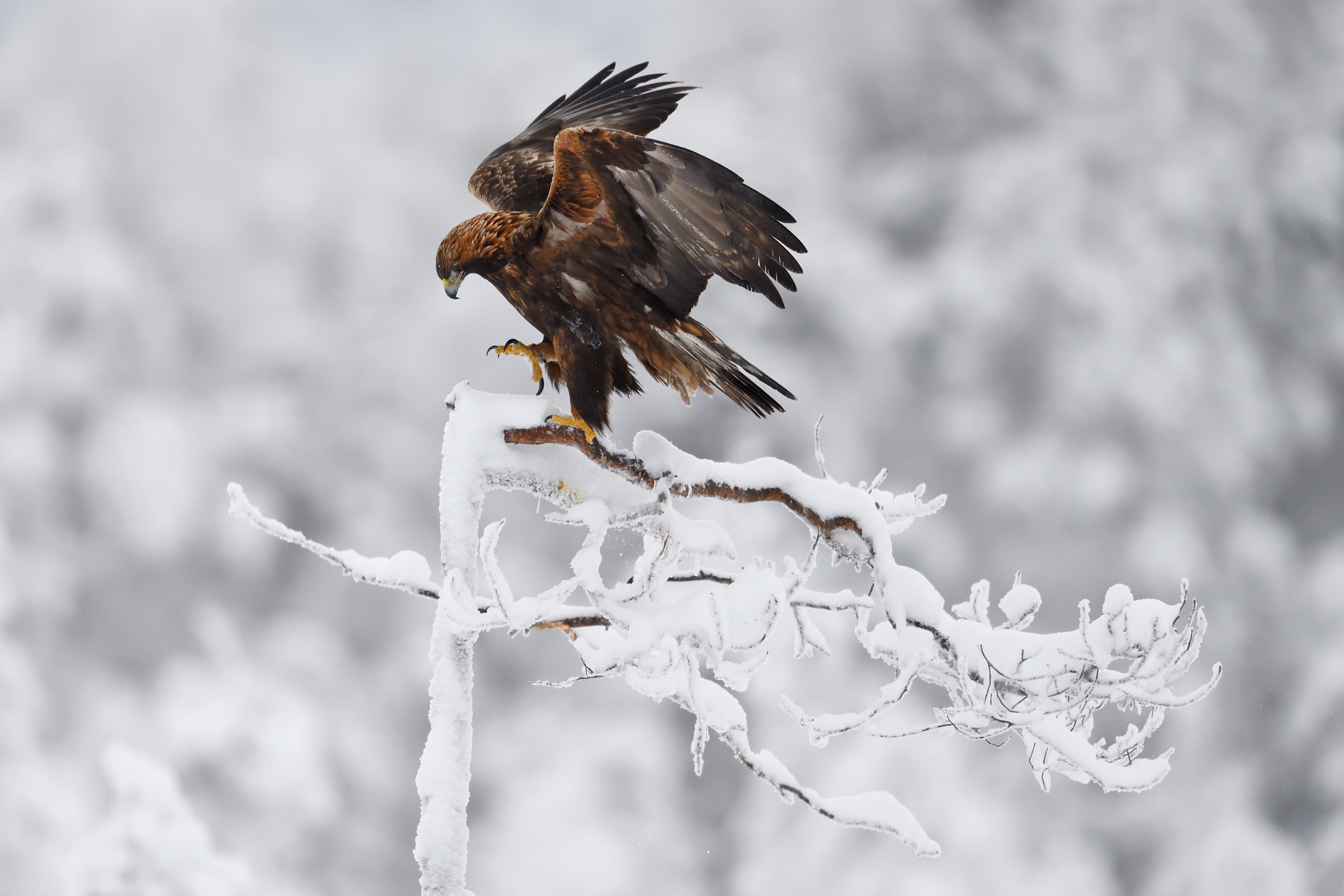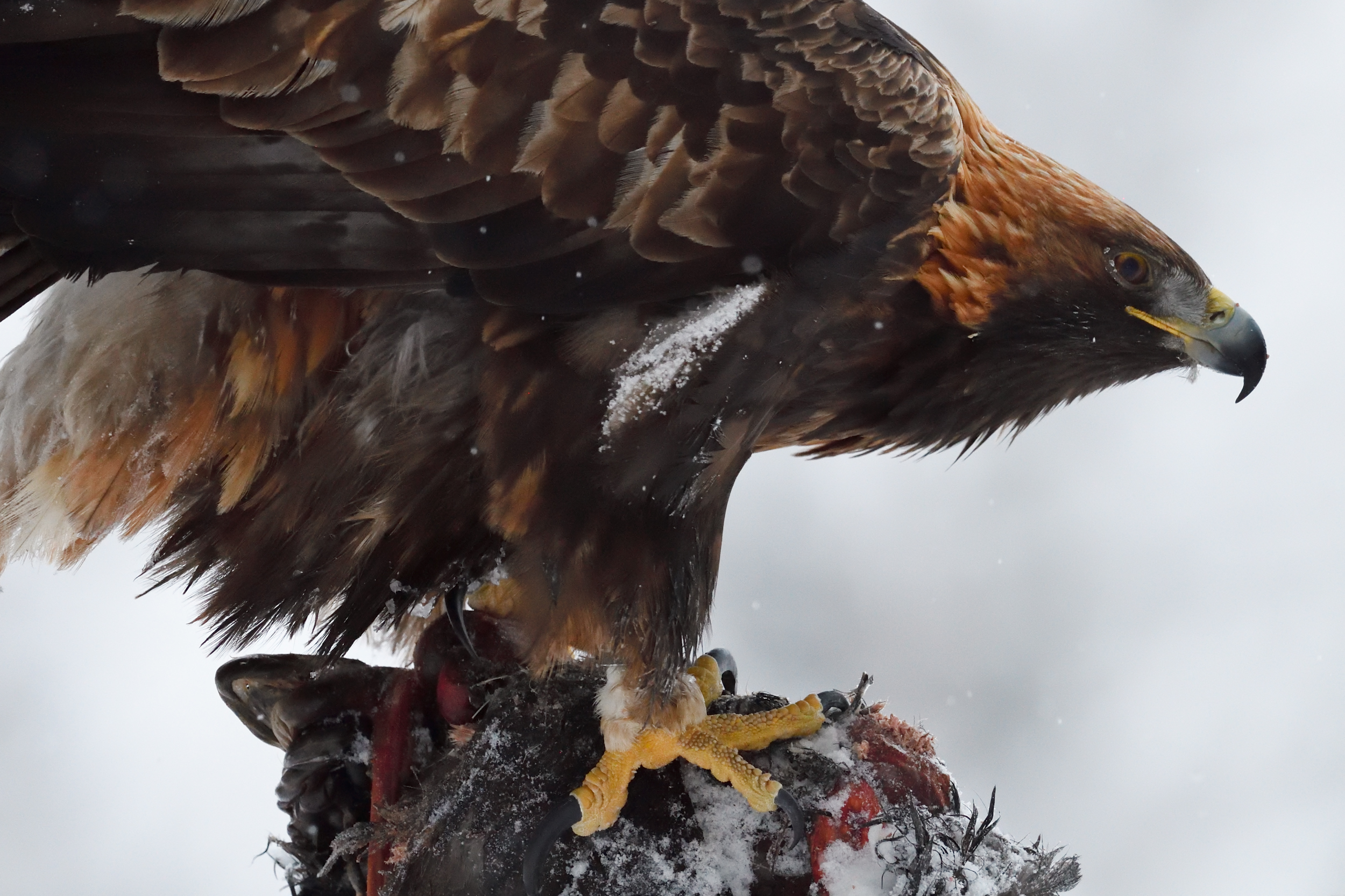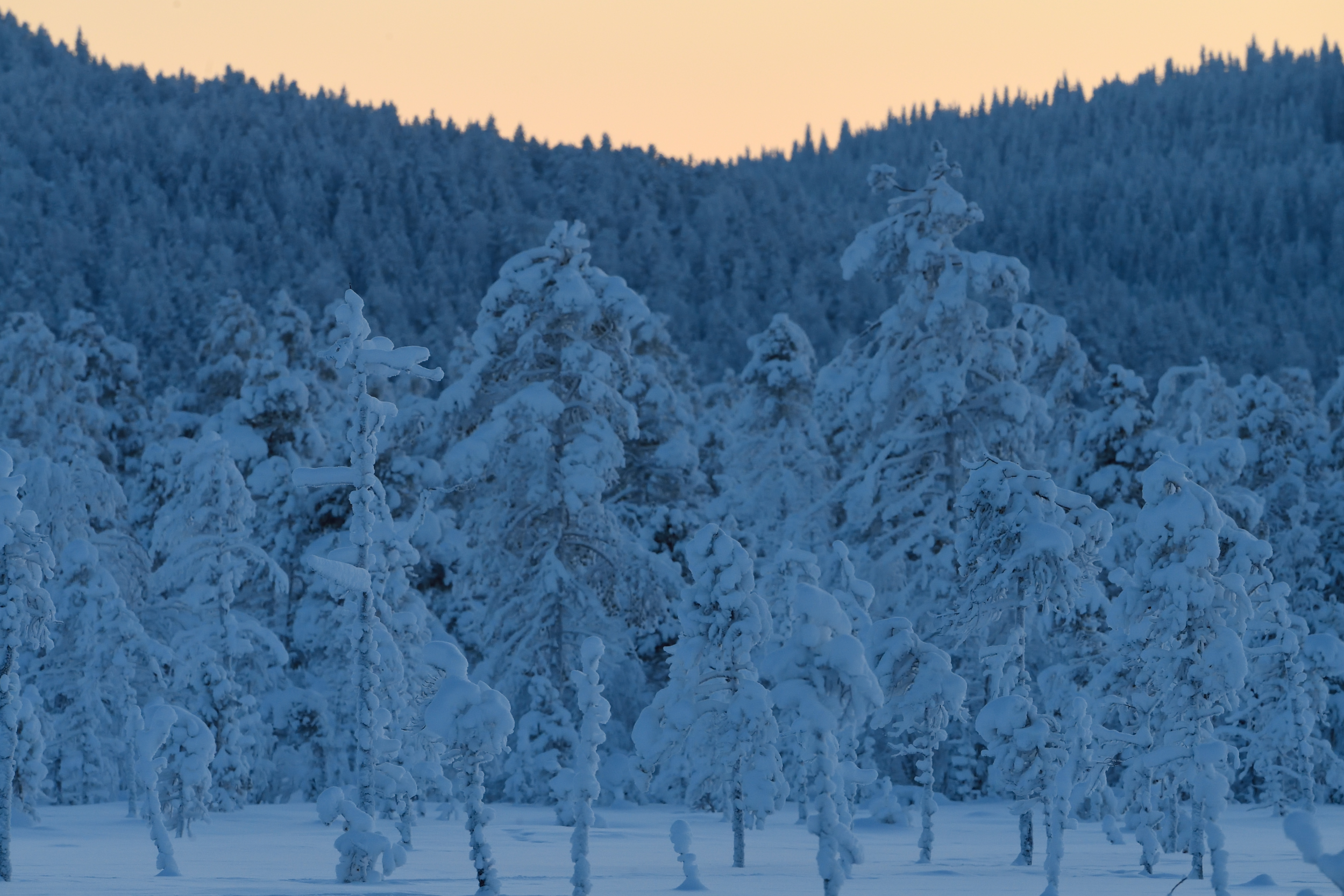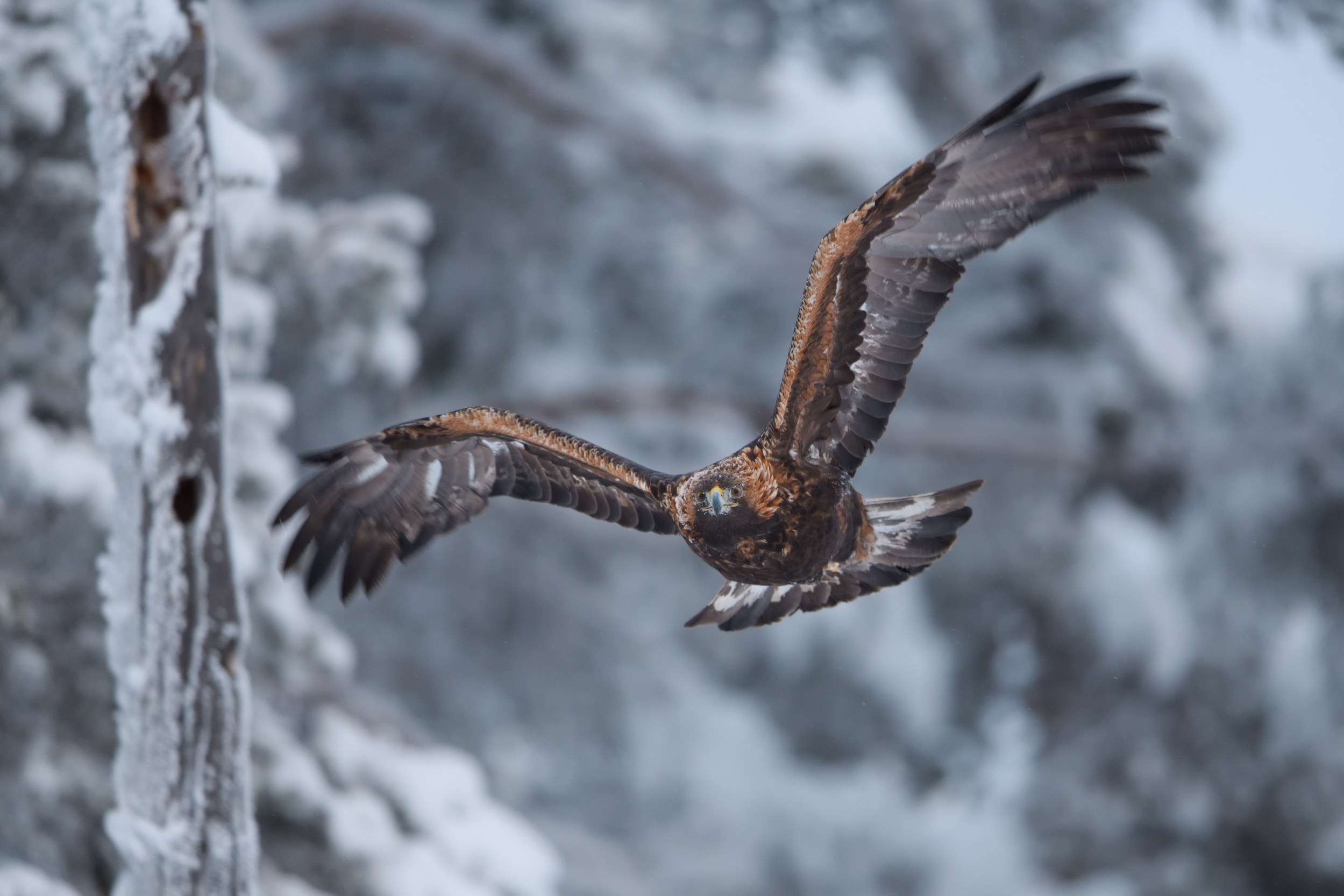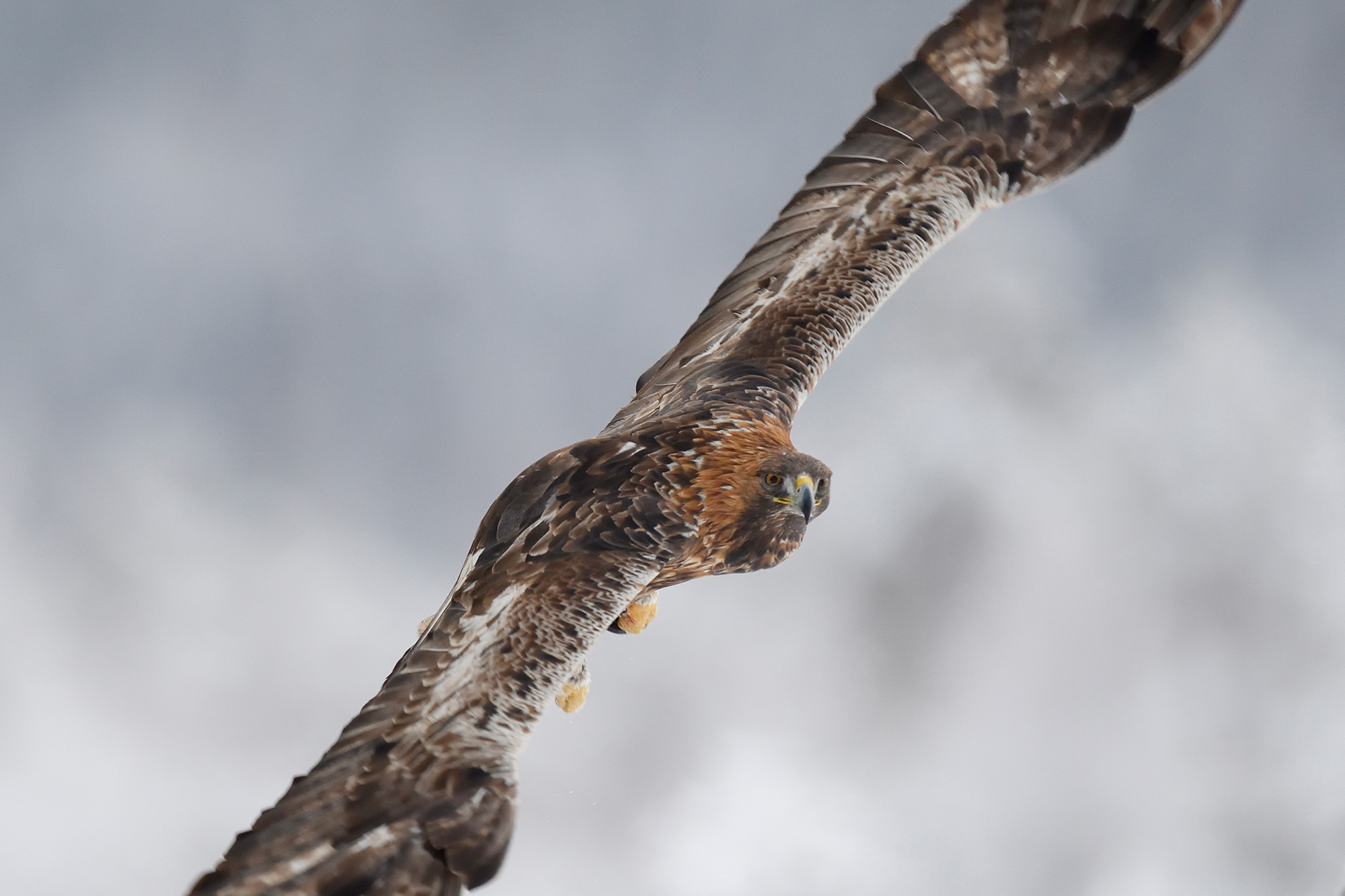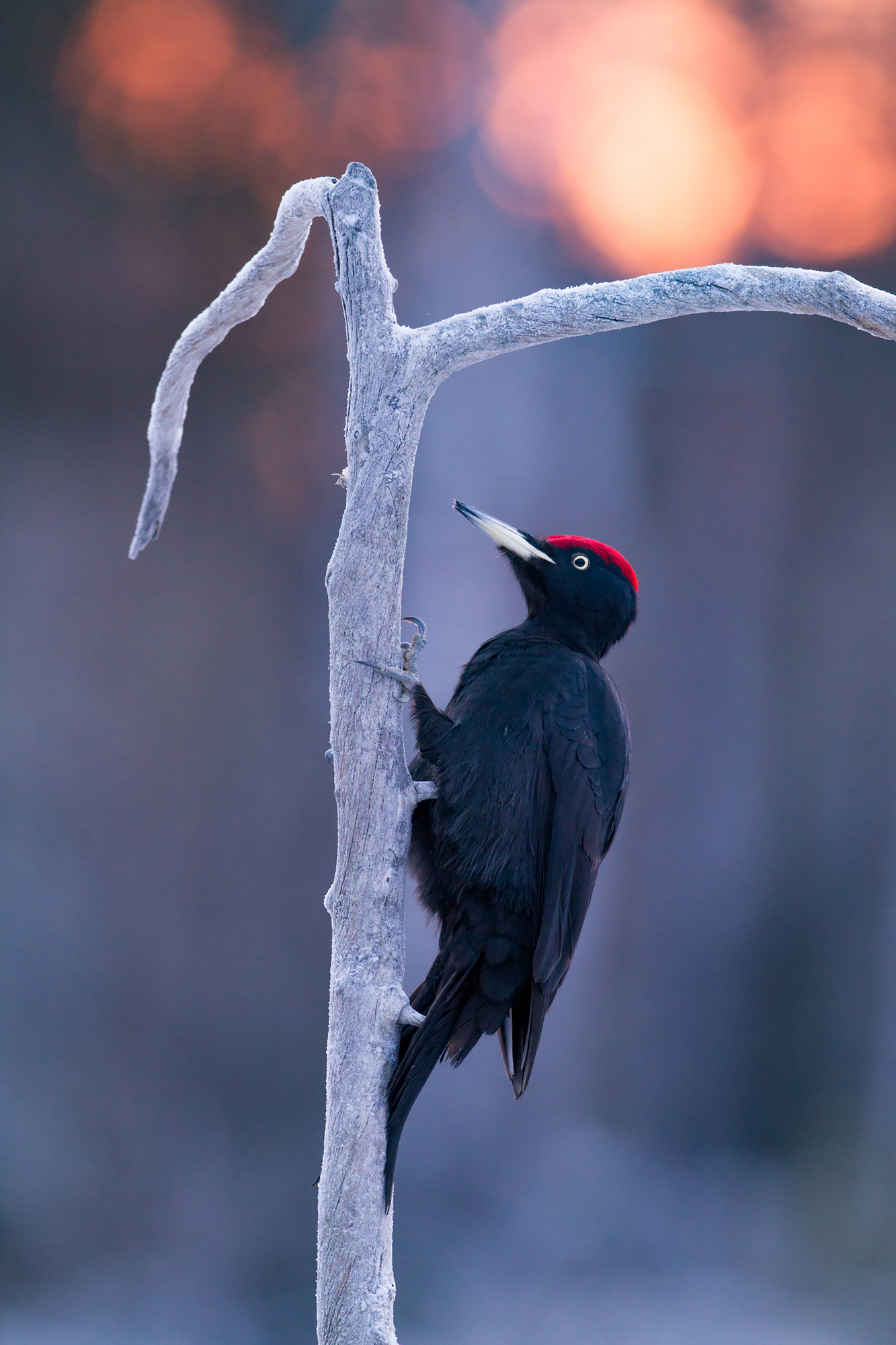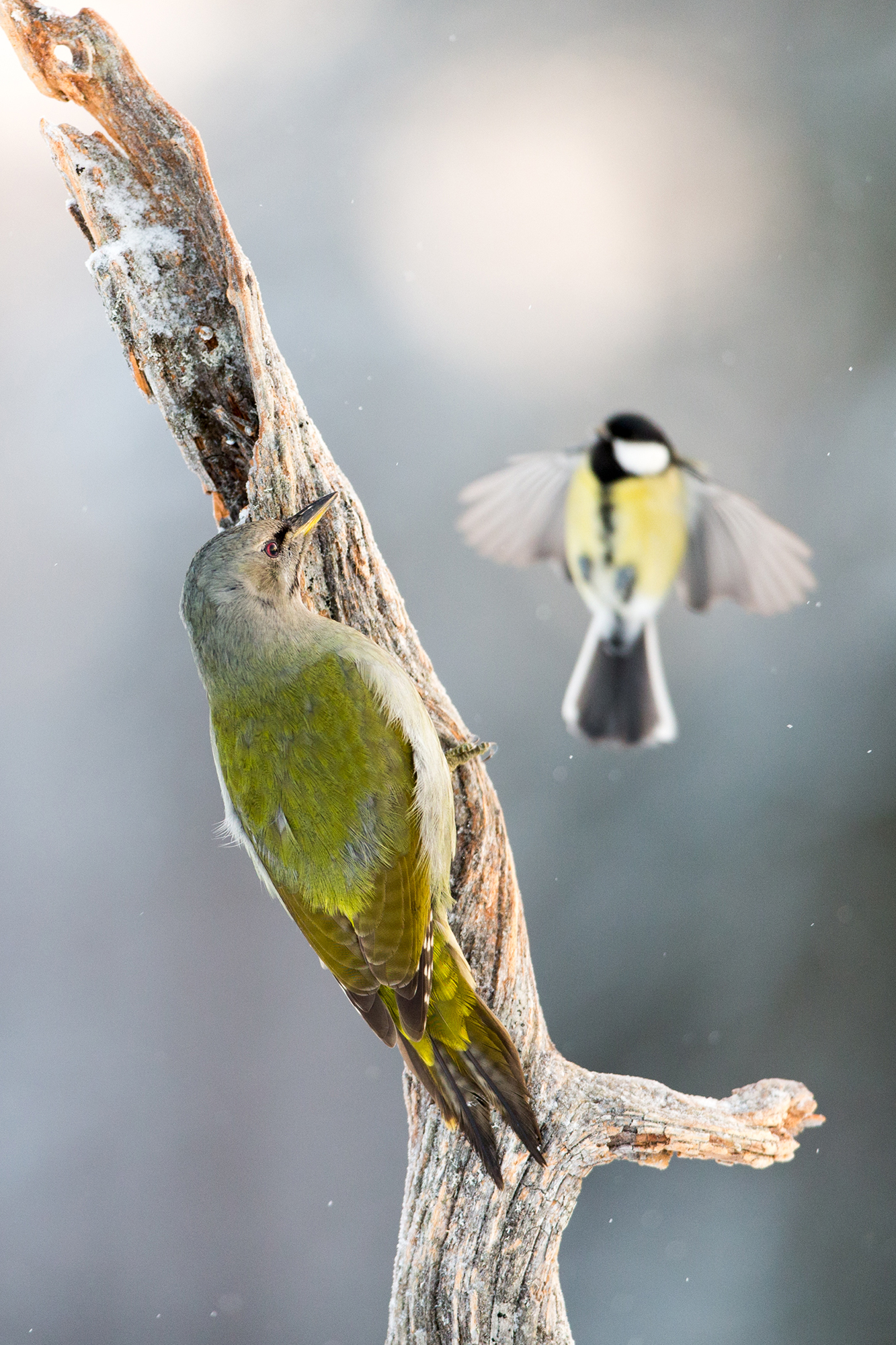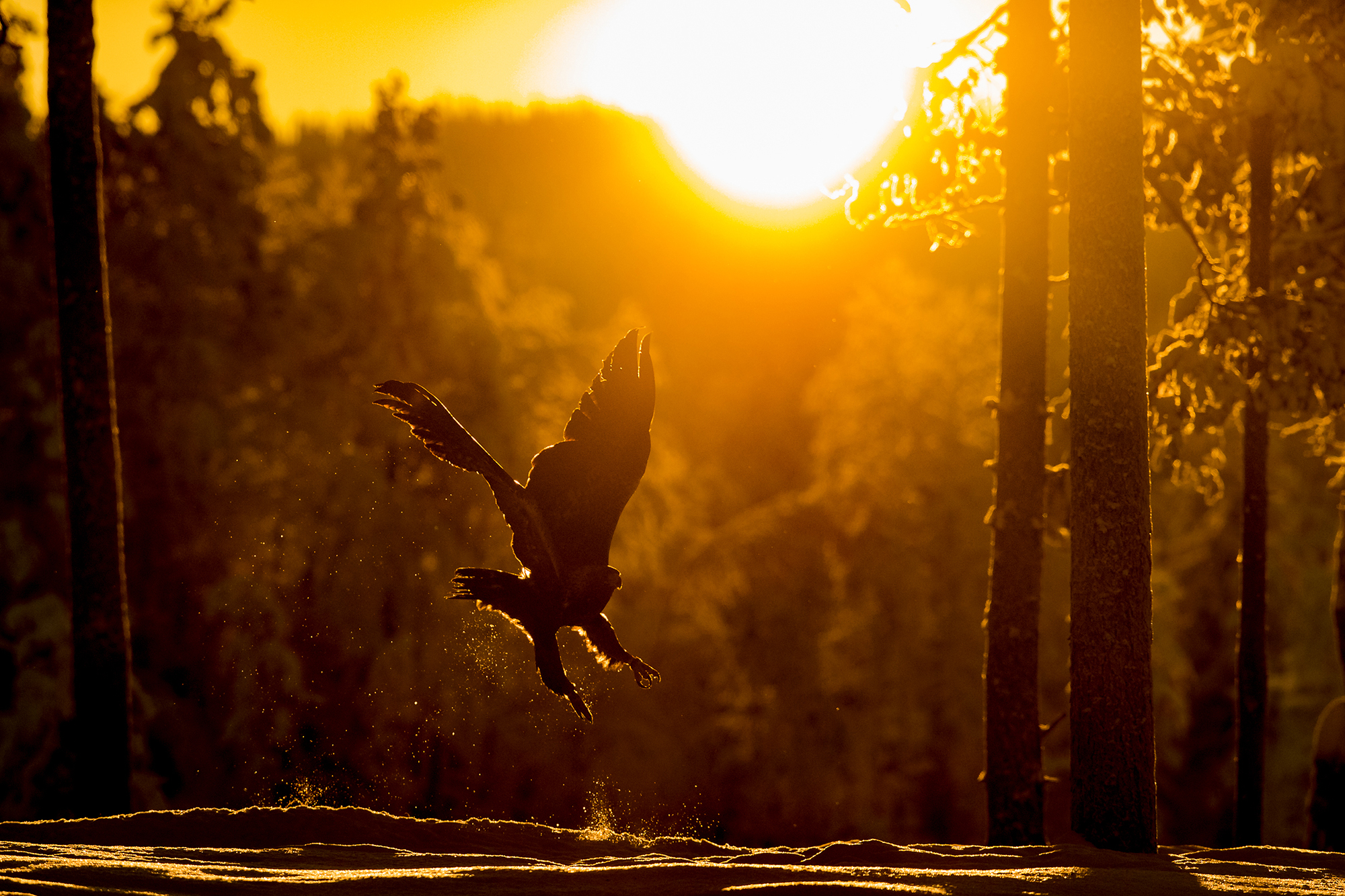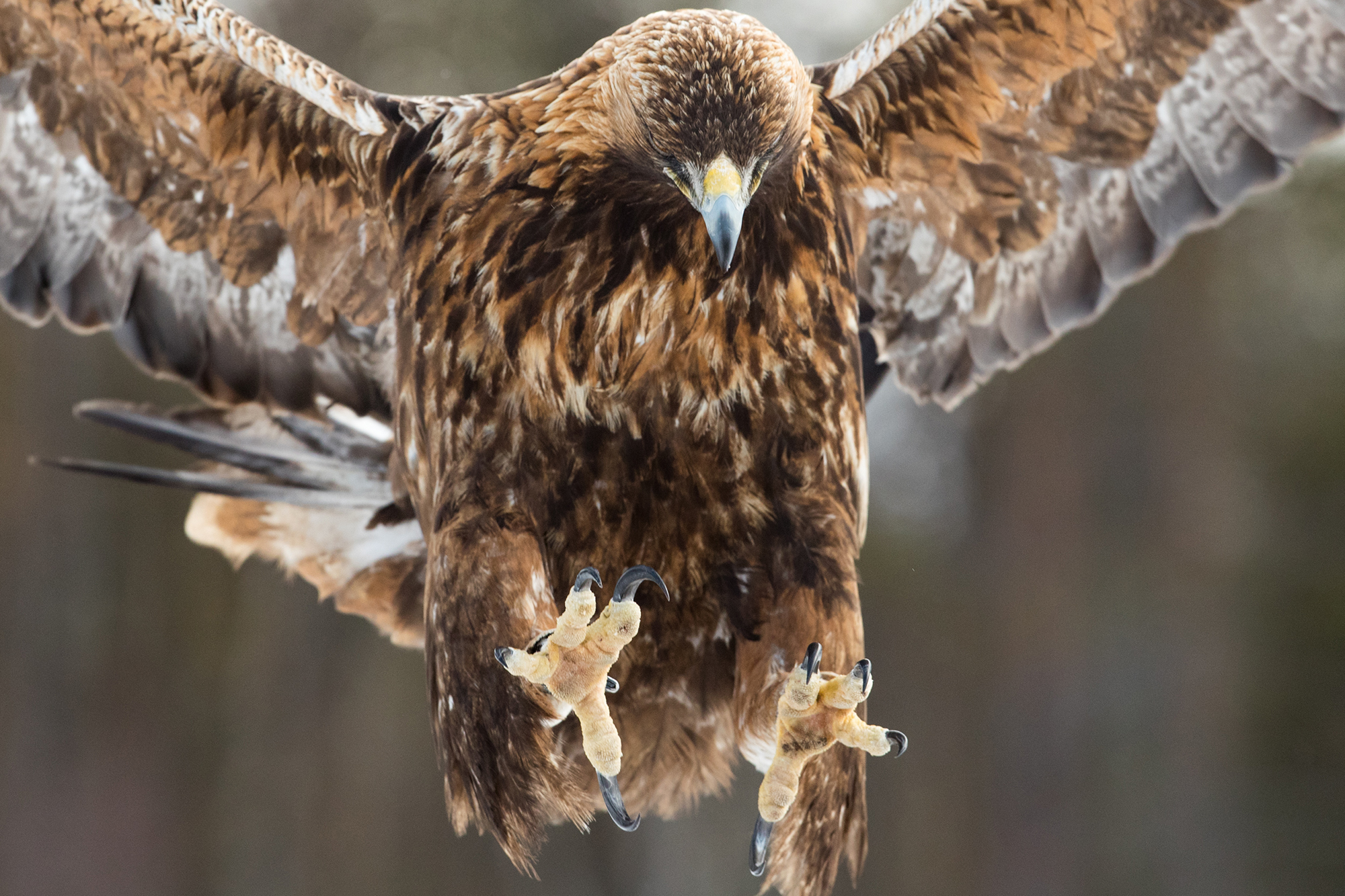Some highlights
- Wild Golden Eagles as close as 10 m away
- Great opportunities to capture images of Golden Eagles interacting with Ravens and sometimes fox
- Three days in very well-built hides
- Chances to photograph both White-tailed Sea Eagles and Goshawks
- Chances to photograph Siberian Jays, Grey-headed Woodpeckers, Bullfinches and other birds
- You will be given photographic advice in a small group with similar interests
Early in the morning, when it is pitch dark, we walk out into the northern wintery forest towards our photo hides, where we will spend the day. Once we have installed our equipment it is time to wait for the light. Suddenly, a movement in the morning half-light, we peer out of the openings in the hide to see a dark shadow. The Golden Eagle is early today. Impatiently, we await the light of day before we can start taking pictures of the feeding Eagle
The Golden Eagle is one of the largest predators in Sweden, and a stunningly beautiful bird that many nature photographers dream of photographing. We now provide excellent opportunities to capture great photos of these birds as close as 10 m from well-built, heated hides.
The Eagles appear very regularly and offer world-class photo opportunities. The Eagles will provide action with Foxes, Ravens and sometimes even White-Tailed Sea Eagles, often at a range approaching the close focusing limits of your lens.
We will also have a chance to photograph many of northern Swedens’ winter inland bird species. With a bit of luck we will have species like the Grey-headed Woodpecker, Siberian Jay, Eurasian Jay, Bullfinch, Greater-spotted Woodpecker, various tits and Goshawks outside the hide.
This time of year, with a high likelihood of cold, snowy, wintery landscapes, there is often an interesting semi-arctic winter light, with vivid colors and long shadows. Together with the possibility of snowfall, this will give our photography an extra dimension.
Itinerary
Day 1 (20/1) (Dinner)
Arrival at Kalvträsk and our accommodation.
We spend the days in hides from early morning to early evening, photographing Golden Eagles and other birds. We rotate between hides according to a schedule.
Day 5 (24/1) (Breakfast)
After breakfast we start our journey home.
Error: Contact form not found.


